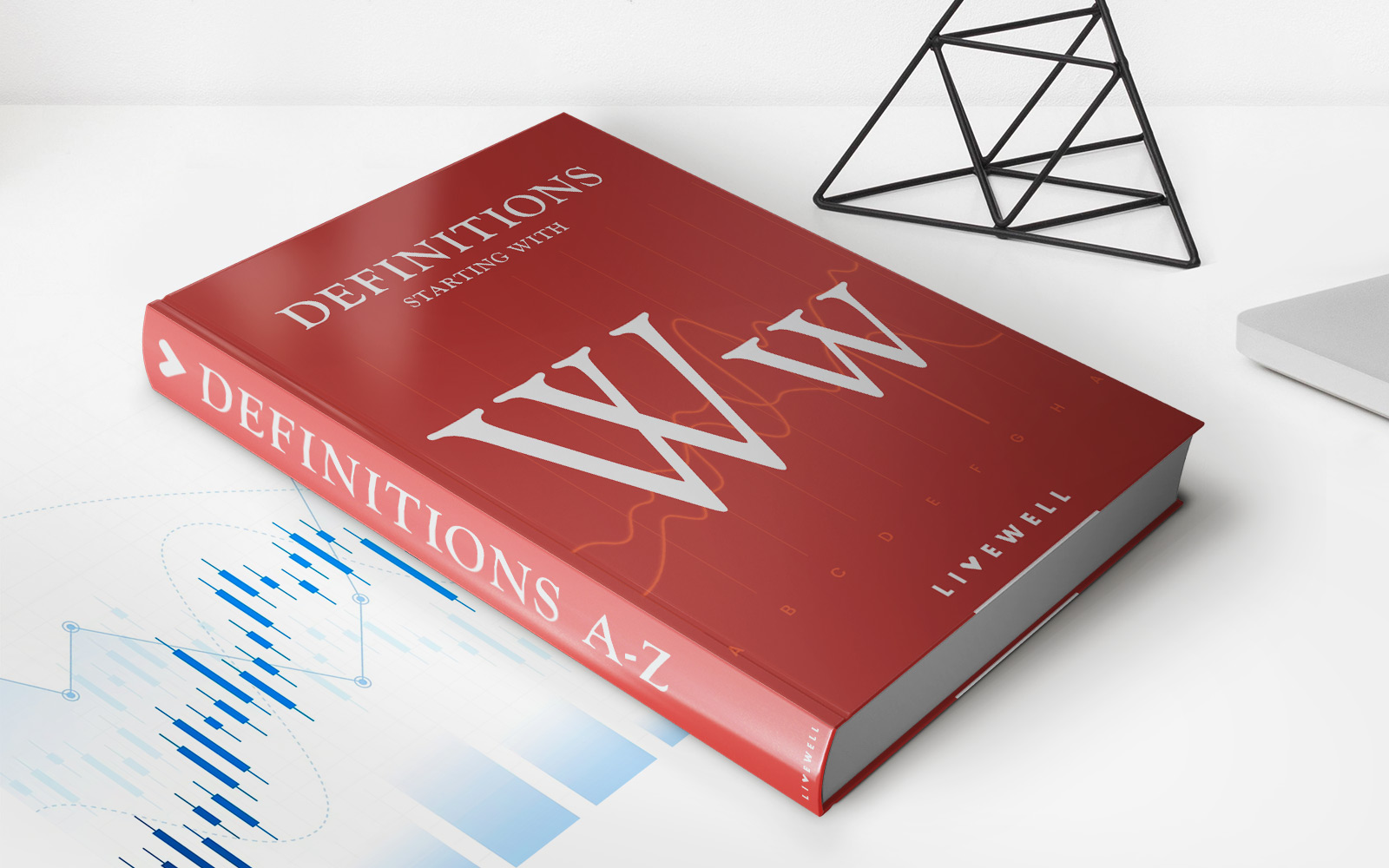Home>Finance>How Do Mergers And Acquisitions Affect Stock Prices


Finance
How Do Mergers And Acquisitions Affect Stock Prices
Published: February 24, 2024
Learn how mergers and acquisitions impact stock prices in the finance sector. Understand the implications for investors and market trends.
(Many of the links in this article redirect to a specific reviewed product. Your purchase of these products through affiliate links helps to generate commission for LiveWell, at no extra cost. Learn more)
Table of Contents
Introduction
Understanding the Complex Relationship Between Mergers and Acquisitions and Stock Prices
Mergers and acquisitions (M&A) are pivotal events in the corporate world, often stirring excitement and speculation among investors and industry enthusiasts. These strategic maneuvers can have a profound impact on the companies involved, as well as on the broader financial landscape. Understanding the dynamics of how M&A activities influence stock prices is essential for investors, analysts, and corporate decision-makers alike.
Mergers and acquisitions encompass a spectrum of transactions, including mergers, acquisitions, consolidations, and takeovers, each with its own distinct implications for the companies involved and their shareholders. These transactions can reshape industries, create new market leaders, and generate substantial value for stakeholders. However, they can also lead to challenges and uncertainties, prompting fluctuations in stock prices and market sentiments.
As we delve into the intricate relationship between M&A activities and stock prices, it becomes evident that numerous factors come into play, shaping the outcomes and reactions of the financial markets. From regulatory considerations and competitive dynamics to financial performance and integration strategies, the implications of M&A transactions on stock prices are multifaceted and warrant careful examination.
In this comprehensive exploration, we will navigate through the nuances of M&A activities and their impact on stock prices, shedding light on the underlying mechanisms and the broader implications for investors and market participants. By unraveling the complexities of this relationship, we aim to provide valuable insights that can empower stakeholders to navigate the evolving landscape of corporate transactions and make informed decisions in the realm of stock investments.
Understanding Mergers and Acquisitions
Before delving into the impact of mergers and acquisitions (M&A) on stock prices, it is crucial to grasp the fundamental nature of these corporate transactions. Mergers and acquisitions are strategic initiatives undertaken by companies to achieve various objectives, such as expanding market presence, gaining competitive advantages, accessing new technologies, or realizing synergies that can drive growth and efficiency.
A merger involves the consolidation of two or more companies to form a new entity, combining their assets, operations, and personnel. This collaborative approach aims to leverage the strengths of each entity, capitalize on complementary capabilities, and create a more formidable market player. On the other hand, acquisitions entail one company acquiring another, often with the goal of harnessing the target company’s resources, customer base, intellectual property, or talent pool.
These transactions can take diverse forms, including horizontal mergers between competitors operating in the same industry, vertical mergers involving companies within the same supply chain, and conglomerate mergers uniting entities from unrelated business sectors. Additionally, acquisitions may be categorized as friendly, where the target company consents to the purchase, or hostile, characterized by resistance from the target company’s management.
It is essential to recognize that M&A activities are not isolated events but rather integral components of corporate strategies and industry dynamics. They reflect the pursuit of growth opportunities, market positioning, and value creation, as companies seek to adapt to evolving market conditions and capitalize on emerging trends.
Furthermore, the motivations driving M&A transactions are diverse and multifaceted, encompassing strategic, financial, and operational considerations. Companies may pursue M&A initiatives to achieve economies of scale, diversify their product offerings, enter new geographic markets, or streamline operations to enhance efficiency and profitability.
By comprehending the underlying drivers and dynamics of mergers and acquisitions, stakeholders can gain a deeper appreciation of the rationale behind these transactions and the potential implications for the companies involved, their shareholders, and the broader market ecosystem.
The Impact of Mergers and Acquisitions on Stock Prices
When companies engage in mergers and acquisitions (M&A), the repercussions on stock prices can be substantial and multifaceted. The announcement and subsequent completion of M&A transactions often trigger noteworthy movements in the stock prices of the involved companies, reflecting the market’s assessment of the potential benefits, risks, and uncertainties associated with the deals.
One of the primary ways in which M&A activities influence stock prices is through the alteration of the companies’ fundamental value proposition. Mergers and acquisitions can reshape the competitive landscape, fortify market positioning, and unlock synergies that promise enhanced growth prospects and profitability. Consequently, investors may recalibrate their valuation of the companies, factoring in the anticipated benefits and risks arising from the transactions.
Moreover, M&A transactions can signal a shift in the strategic direction and growth trajectory of the companies involved, influencing investor perceptions and expectations. For instance, an acquisition that enables a company to diversify its revenue streams or expand into high-growth markets may elicit positive sentiment among investors, potentially driving up the stock price. Conversely, concerns regarding the integration challenges, cultural clashes, or overpayment for the acquired assets can exert downward pressure on stock prices.
Another crucial aspect of the impact of M&A on stock prices pertains to the financing and cost implications associated with these transactions. The financing structure of M&A deals, such as the utilization of cash, stock, or debt instruments, can influence investors’ assessment of the companies’ financial health and capital structure. Additionally, the potential dilution or accretion in earnings per share resulting from stock-based M&A transactions can sway investor sentiment and stock prices.
Furthermore, the regulatory and antitrust considerations surrounding M&A activities can significantly impact stock prices. The approval or rejection of M&A deals by regulatory authorities can introduce uncertainties and alter the perceived probabilities of deal completion, leading to fluctuations in stock prices as investors gauge the potential outcomes.
By closely monitoring the impact of M&A activities on stock prices, investors and analysts can gain valuable insights into the market’s assessment of the transactions and the underlying factors shaping stock price movements. This understanding is instrumental in making informed investment decisions and navigating the complexities of the evolving corporate landscape.
Factors Affecting Stock Prices in Mergers and Acquisitions
Several key factors play a pivotal role in shaping the impact of mergers and acquisitions (M&A) on stock prices, reflecting the intricate interplay of market dynamics, corporate strategies, and investor sentiments. Understanding these factors is essential for comprehending the complexities of stock price movements in the context of M&A activities.
Strategic Rationale and Synergies: The strategic rationale behind M&A transactions, such as access to new markets, diversification of product portfolios, or consolidation of industry leadership, can significantly influence stock prices. Investors assess the potential synergies arising from the transactions and the extent to which they can create long-term value for the combined entity, thereby impacting stock valuations.
Financial Considerations: The financial aspects of M&A, including the financing structure, cost of capital, and impact on earnings per share, are instrumental in shaping stock price movements. Investors analyze the funding sources and the implications for the companies’ balance sheets, cash flows, and profitability, which can sway stock valuations.
Regulatory and Antitrust Factors: The regulatory landscape and antitrust considerations surrounding M&A transactions can introduce uncertainties that reverberate in stock prices. The likelihood of regulatory approval, potential divestitures, and the implications of regulatory decisions on the companies’ market positioning can impact investor perceptions and stock valuations.
Integration Risks and Execution Challenges: The successful integration of merged entities and the effective execution of post-merger strategies are critical determinants of the long-term value creation potential of M&A transactions. Investors closely evaluate the risks and challenges associated with integration, including cultural alignment, operational harmonization, and realization of synergies, which can influence stock prices.
Competitive Dynamics and Market Positioning: M&A activities can reshape competitive dynamics and alter the market positioning of the involved companies. Investors assess the implications of the transactions on the companies’ competitive advantages, market share, and ability to capitalize on emerging opportunities, which can impact stock valuations.
Market Sentiments and Investor Perceptions: The reactions of investors and market participants to M&A announcements, as well as the broader market sentiments, play a crucial role in shaping stock prices. Investor perceptions regarding the rationale, potential outcomes, and risks associated with the transactions can drive fluctuations in stock valuations.
By considering these multifaceted factors, investors and analysts can gain a comprehensive understanding of the intricacies underlying stock price movements in the context of M&A activities. This insight is invaluable for navigating the evolving landscape of corporate transactions and making informed investment decisions.
Market Reactions to Mergers and Acquisitions
When mergers and acquisitions (M&A) are announced, the financial markets often respond with notable reactions, reflecting the collective assessment of investors, analysts, and other market participants regarding the potential implications and outcomes of the transactions. These market reactions can manifest in various forms, encompassing stock price movements, trading volumes, and shifts in market sentiments, offering valuable insights into the perceived impact and value creation potential of the M&A activities.
Stock Price Movements: The announcement of M&A transactions typically triggers discernible movements in the stock prices of the involved companies. Positive market reactions, characterized by stock price increases, may signify investor optimism regarding the strategic rationale, synergies, and growth prospects associated with the transactions. Conversely, negative market reactions, leading to stock price declines, may reflect concerns about integration risks, overpayment, or uncertainties surrounding the deal.
Trading Volumes and Liquidity: Market reactions to M&A announcements often manifest in changes in trading volumes and liquidity levels. Heightened trading activities and increased liquidity can indicate heightened investor interest and engagement following M&A disclosures, reflecting the market’s assessment of the significance and potential value implications of the transactions.
Volatility and Risk Perceptions: The volatility of stock prices and the perceived levels of risk associated with the involved companies can offer insights into market reactions to M&A activities. Heightened volatility and fluctuations in risk metrics may underscore the uncertainties and divergent expectations surrounding the potential outcomes and implications of the transactions, reflecting the nuanced nature of market sentiments.
Industry and Sector Dynamics: Market reactions to M&A announcements often extend beyond the individual companies involved, influencing broader industry and sector dynamics. Positive market reactions to transformative M&A activities within specific sectors may catalyze increased investor interest and capital inflows, while negative reactions may prompt reevaluations of sectoral prospects and competitive landscapes.
Analyst Assessments and Recommendations: The reactions of financial analysts, including their assessments, recommendations, and target price revisions following M&A announcements, can shape market sentiments and investor perceptions. Upgraded or downgraded analyst recommendations may reflect evolving perspectives on the potential impacts of the transactions, influencing market reactions and stock price movements.
By comprehensively analyzing these market reactions to M&A activities, investors and market participants can gain valuable insights into the collective assessments and expectations shaping stock price movements and market dynamics. This understanding is instrumental in navigating the complexities of the evolving corporate landscape and making informed investment decisions amidst the dynamic backdrop of M&A activities.
Conclusion
As we navigate the intricate relationship between mergers and acquisitions (M&A) and stock prices, it becomes evident that these corporate transactions exert profound and multifaceted influences on the financial markets. The impact of M&A activities on stock prices is shaped by a confluence of factors, encompassing strategic, financial, regulatory, and market dynamics, reflecting the complexities and nuances inherent in these transformative events.
Understanding the implications of M&A activities on stock prices is indispensable for investors, analysts, and corporate stakeholders, as it enables them to discern the underlying drivers of stock price movements, anticipate market reactions, and make informed decisions in the realm of stock investments and corporate strategies. By evaluating the strategic rationale, financial considerations, integration risks, and market sentiments surrounding M&A transactions, stakeholders can gain valuable insights into the potential value creation, risks, and uncertainties associated with these endeavors.
Moreover, the market reactions to M&A announcements offer a window into the collective assessments and expectations of investors and market participants, reflecting the dynamic interplay of perceptions, sentiments, and anticipations that shape stock price movements and market dynamics. By closely monitoring these market reactions, stakeholders can refine their understanding of the evolving landscape of corporate transactions and capitalize on emerging opportunities while mitigating potential risks.
As the corporate landscape continues to evolve, M&A activities will remain pivotal drivers of industry dynamics, market sentiments, and value creation strategies. By embracing a comprehensive understanding of the impact of M&A on stock prices and market reactions, stakeholders can navigate the complexities of the financial markets with acumen and foresight, positioning themselves to capitalize on the opportunities and challenges presented by these transformative transactions.
In conclusion, the relationship between mergers and acquisitions and stock prices underscores the interconnectedness of corporate strategies, market dynamics, and investor perceptions, underscoring the imperative of informed decision-making and strategic foresight in the realm of stock investments and corporate transactions.














